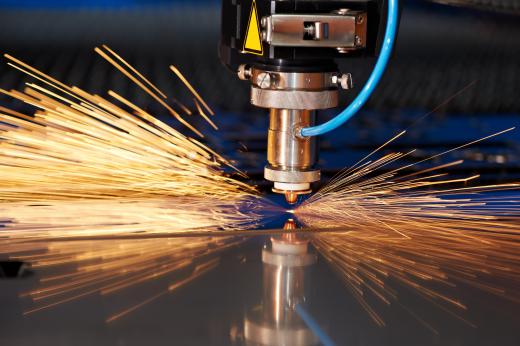Engraving is a type of marking method that involves printing or designing letters, characters, or images by cutting or carving with some kind of apparatus. On an industrial level, this can involve engraving massively produced items like dog tags, plaques, trophies, or metal plates. Custom engraving is a popular with consumers because it allows for personalization of certain items and products. There are many different methods for industrial engraving which all have their benefits and are used for particular products. These methods include using stencils, CNC engraving machines, and lasers.
The use of stencils and etching is a common type of industrial engraving that uses chemical compounds to create letters or images. Etching and stenciling involves a process of dipping a covered piece of material into a chemical bath. The material can be plastic, metal, or any other kind, but the chemical used varies depending on the material. It only has some parts covered up so that the chemicals only affect the exposed parts. These exposed parts are slowly eaten away by the chemical, making a pattern in the material that can be seen once the stencil is removed.

Computed numerically controlled, or CNC, engraving has become an increasingly popular type of industrial engraving that uses CNC machines to control a process of engraving by the use of a computer. This machine has a spindle and drive system that are manipulated by a computer to engrave, or cut, material in a certain pattern along three axes of a plane. It engraves based on input data from a user and produces the engraving very quickly. This process is beneficial on an industrial level because it allows items such as dog tags or plaques to be massively produced at a high rate. It is also beneficial for industrial purposes because it reduces manual labor.

Another type of industrial engraving used on a large scale is laser engraving. This kind of engraving uses a combination of precise lasers as well as marking materials to produce engravings on metal, ceramic, and glass. The process is a chemical process that uses marking material and fuses the materials to a hard surface by a laser. This process makes the engraving permanent and each marking material is chemically mixed based on the material to which it will bond. Laser industrial engraving is unique in that it can engrave and add color to the engraving at the same time, making the engraving more individual.
